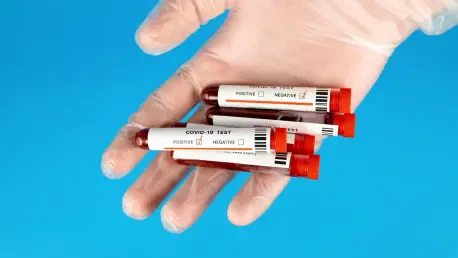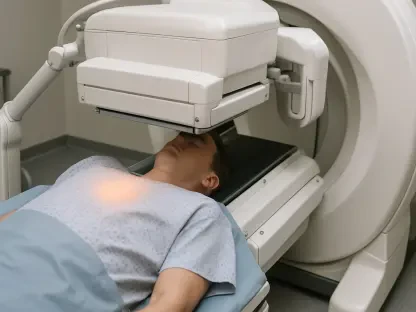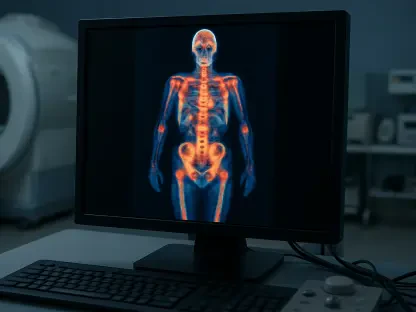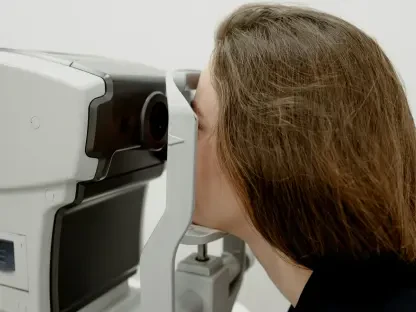The recent approval of a blood test for Alzheimer’s disease by the United States marks a significant turning point in the realm of medical diagnostics. Historically, confirming the presence of Alzheimer’s required patients to undergo costly and invasive procedures such as PET scans or lumbar punctures to detect amyloid plaques. These hurdles not only make the diagnostic process lengthy and uncomfortable but also restrict access to early diagnosis for many patients. This novel blood test, developed by Fujirebio Diagnostics, represents a pioneering approach to this longstanding problem. By measuring the ratio of certain proteins in the blood linked to amyloid plaque formation, the test provides a non-invasive and relatively quick method of detecting Alzheimer’s. As the population ages and the percentage of people over 65 increases, there is a growing need for diagnosing Alzheimer’s efficiently. This development poses the potential to revolutionize how the medical community approaches Alzheimer’s detection, offering a glimmer of hope in addressing a major public health challenge.
Transformative Potential of Non-Invasive Diagnostics
The advent of this blood test underscores a pivotal shift towards less invasive diagnostic techniques, which align with broader healthcare movements towards accessibility and early intervention. Alzheimer’s disease currently affects about 10% of Americans over the age of 65, and this number is projected to increase as more individuals reach old age. With early diagnosis, patients could potentially take advantage of therapies aimed at slowing disease progression. Treatments like lecanemab and donanemab are designed to target amyloid plaques, offering a chance to preserve cognitive function and delay symptoms. Early intervention is crucial, as it can provide those diagnosed with more time and better quality of life. The blood test, while not a cure, is a promising tool for granting access to timely treatment and support. By making Alzheimer’s detection more accessible, this innovative approach could reshape public health strategies related to dementia care, increasing overall patient outcomes.
Furthermore, by simplifying the diagnostic process, the blood test could democratize Alzheimer’s screening, bridging gaps in healthcare equity. Unlike traditional methods reserved for specialized facilities or urban centers, blood tests can be performed in a broader range of settings, making it feasible for a wider audience to receive timely diagnosis. This represents a significant step toward achieving more inclusive access to Alzheimer’s care. The approval of this blood test can thus be seen as an affirmation of the growing importance of non-invasive diagnostics. As the medical community continues to embrace technology that enhances patient care while reducing burdensome procedures, such innovations become indispensable in modern medicine.
Implications for Future Treatment and Care
While the blood test offers a substantial advance in detecting Alzheimer’s, it also signals the importance of pairing innovative diagnostics with comprehensive care strategies. The test should ideally be used in conjunction with existing methods to confirm a diagnosis, ensuring precision and reliability in clinical outcomes. Clinical trials have shown promising results, demonstrating the test’s effectiveness in comparison with traditional techniques like PET scans and spinal fluid analysis. As these findings are integrated into clinical practice, they may lead to refinements in diagnostic protocols, ensuring all patients receive the most accurate assessments possible.
Furthermore, achieving early detection through such innovative diagnostics fosters the opportunity for more personalized treatment plans, allowing healthcare systems to allocate resources more efficiently. The shift towards personalized medicine underscores a contemporary approach to patient care, emphasizing treatment plans tailored to individual needs and conditions. Alzheimer’s care could see dramatic enhancements through this method, as plans aligned with an individual’s specific progression rate and symptoms could prove more effective.
Amidst these advances, the medical community must remain committed to ethical practices and equitable healthcare delivery. As innovations like the blood test become more mainstream, ensuring they reach all strata of society is imperative. Supporting research and development while advocating for wider insurance coverage and public health initiatives is crucial in maintaining the momentum of such scientific breakthroughs.
A Call for Broader Access and Ethical Considerations
The introduction of the blood test serves as a reminder of the need to support not just medical innovation but also the systems that facilitate access to these advancements. Access to cutting-edge diagnostics should not be limited to certain demographics; it should be available to all who may benefit from them. Allocating resources and advocacy efforts towards making these technologies broadly accessible is crucial to fostering a healthier society.
Moreover, this development challenges the healthcare sector to continue pursuing innovations that not only advance science but also prioritize inclusiveness and fairness. The blood test’s potential impact on Alzheimer’s care reflects a broader trend towards integrating technological progress with ethical responsibility in healthcare settings. It calls for a collective effort to bridge disparities in access to groundbreaking treatments and ensure everyone can reap the benefits of medical advancements.
Future Considerations and Steps Forward
The recent approval of a blood test for Alzheimer’s disease in the United States marks a pivotal moment for medical diagnostics. Traditionally, confirming Alzheimer’s demanded invasive and costly procedures, such as PET scans or spinal taps, to identify amyloid plaques. These methods not only prolonged the diagnostic journey but also limited early detection opportunities for many individuals. The innovative blood test from Fujirebio Diagnostics aims to tackle this longstanding issue. By gauging the ratio of certain proteins associated with amyloid plaque formation in the blood, it offers a quicker, non-invasive tool for detecting Alzheimer’s. As the aging population surges, with more people crossing the 65-year threshold, there’s an urgent demand for effective Alzheimer’s diagnosis. This advancement could reshape the medical community’s approach to diagnosing Alzheimer’s, ushering in hope for navigating a major public health concern as it strives for more timely and accessible evaluations.









